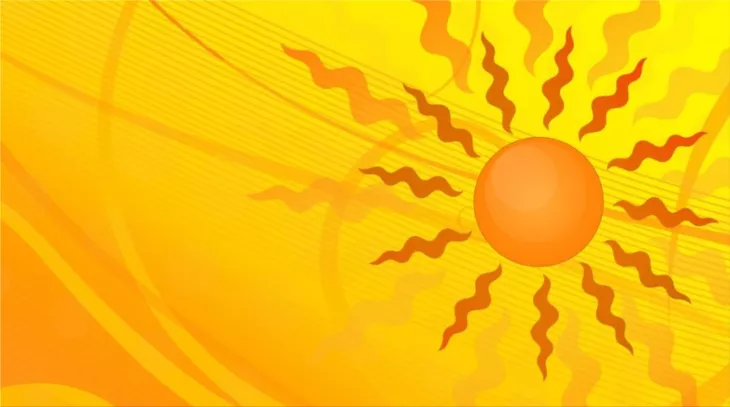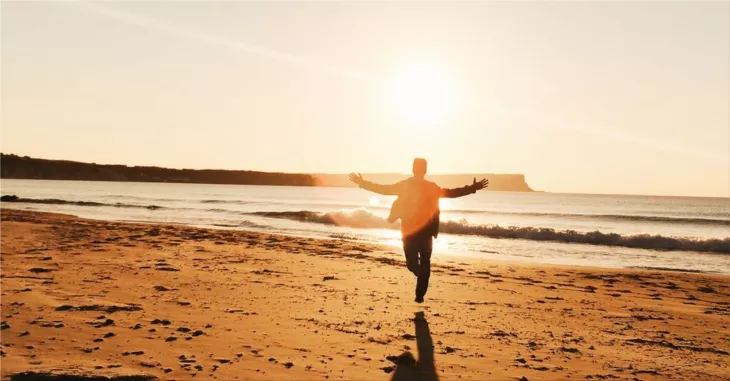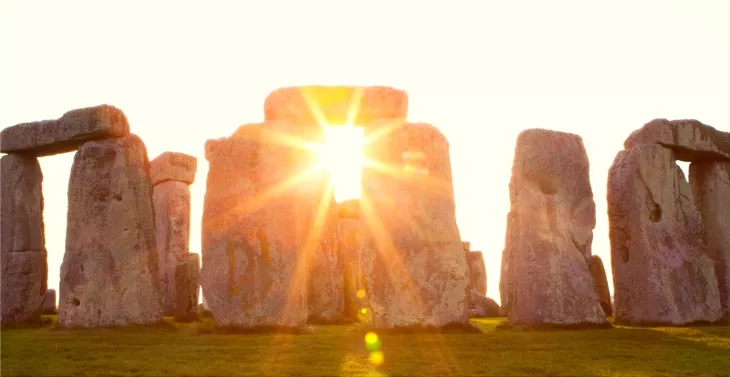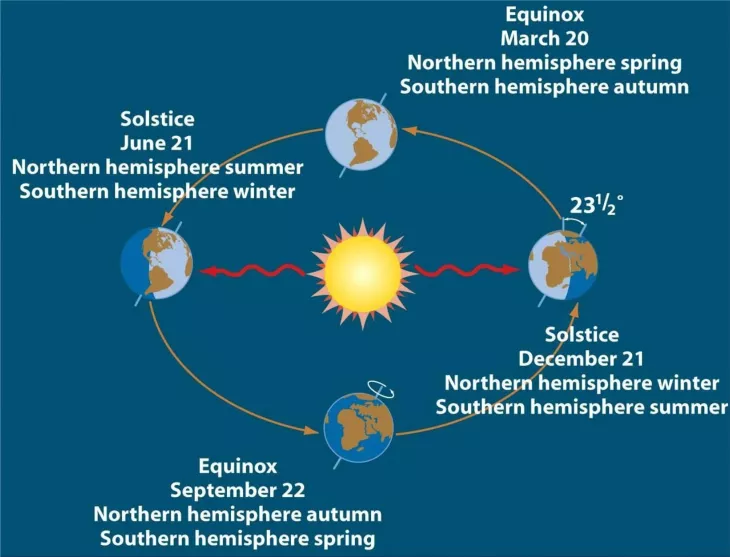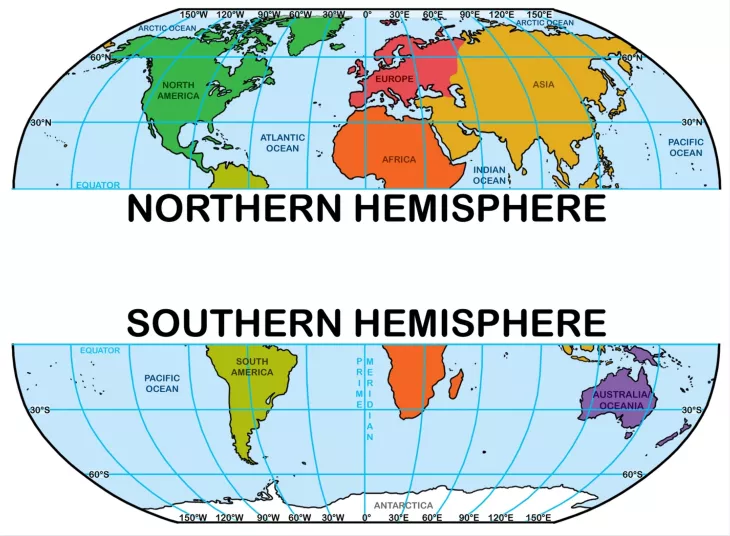The summer solstice 2022 marks the beginning of summer from an astronomical point of view. It is the time of year when the day is the longest and the night the shortest. Find out when the summer solstice is in 2022, what is happening to Earth on this day and how this astronomical event may affect you!
What is the summer solstice?
At the summer solstice, the Sun travels its longest path through the sky, reaching its northernmost points in the northern hemisphere. Therefore, in this part of the world, the day of the summer solstice has the most natural light and is the longest of the year. The Sun shines for 15 hours and 32 minutes, and the night lasts only 8 hours and 28 minutes.
The term "solstice" comes from the Latin words "sol" (sun) and "sistere" (to stand still). The association of these two words is explained by the fact that at the solstice, the period in which the declination of the Sun (the angle between the Sun's rays and the plane of the Earth's equator) seems constant, and its apparent north or south motion seems to stop before changing direction.
This phenomenon is most visible in the Arctic Circle, where the Sun remains above the horizon for at least 24 continuous hours. Hence the term "The Land of the Midnight Sun." At the winter solstice, at the Arctic Circle, the Sun remains below the horizon for at least 24 consecutive hours. The Arctic Circle is a northern part of the Earth and crosses countries like Norway, Sweden, Finland, Russia, the United States (Alaska), Canada, Denmark, and Iceland.
What happens to Earth on the first day of summer?
Planet Earth revolves around its axis once a day, producing the cycle of day and night. At the same time, the Earth moves around the Sun in its orbit, making a complete rotation during a year.
The Earth's axis of rotation is not perpendicular to the axis of motion around the Sun, but there is a slight inclination at 23.44 °. During the middle of the year, the northern part of the Earth is slightly inclined towards the Sun, and the south is inclined in the opposite direction. During the other half of the year, the reverse event occurs.
When the northern hemisphere is at its sharpest point toward the Sun, this part of the world is the summer solstice. At the same time, in the southern hemisphere is the winter solstice. Then, about six months later, the northern hemisphere has the winter solstice, and the southern hemisphere has the summer solstice.
Does the summer solstice always is on the same day?
The summer solstice day is not based on a specific date or calendar time. Instead, it depends primarily on when the Sun reaches its northernmost point at the equator. However, other factors influence the exact date of the summer solstice, namely the gravitational pull of the moon and planets.
In addition, the summer solstice is not always on the same day because of the difference between the Gregorian calendar year (normally 365 days) and the tropical year (the time when the Earth orbits the Sun, which is usually of approximately 365.242199 days). To make up for the missing days, the Gregorian calendar adds a leap day about every four years, making the date of the first day of summer different.
However, the summer solstice in the northern hemisphere varies slightly from June 20 to 22 each year.
When will the summer solstice be in 2022?
In 2022, the summer solstice is on June 21.
The longest day of the year
In the northern hemisphere, the summer solstice is the day with the longest period of sunlight. The Sun is at its highest point in the sky, and its rays reach the Earth at a more direct angle. For those living in the southern hemisphere, this is the shortest day of the year and marks the arrival of winter.
Is the summer solstice the hottest day of the year?
At the summer solstice, the northern hemisphere receives more sunlight than at any other time, but that doesn't mean it's the hottest day.
The Earth's oceans and atmosphere absorb and store some of the energy received from the Sun, then release it back in the form of heat at different intensities. So even though the Earth will absorb the most sunlight at the summer solstice in 2022, it will take a few weeks to release it into the atmosphere and water. For this reason, the days with the highest temperatures in the year are usually July or August.
In general, water heats up more slowly than air or land, so the oceans and seas are colder in the early summer days, although it is warm outside.
What are the effects of the summer solstice?
On the longest day of the year, our whole being is energized. As a result, we feel more refreshed, more inspired, and generally have a higher mood. Therefore, it is possible that your love of life will be more pronounced on this day, and you will feel great inner joy.
Ancient traditions on the first day of summer
The summer solstice has long been celebrated in various ways by different cultures:
The Egyptians built the Great Pyramids so that the Sun, seen from the Sphinx, would fall exactly between two of the pyramids at the summer solstice.
The Maya built cities where buildings were designed to align with the Sun during the solstice. Archaeologists have discovered the remains of an astronomical observatory in a Mayan city, where it is believed that the city's population gathered to see how their king commanded the heavens.
In Europe, the past centuries, the Irish cut hazelnut branches on the eve of the summer solstice to be used in search of gold, water, and precious jewelry.
The famous stones at Stonehenge are lined up to frame the sunrise at the summer solstice. Because of this, experts suggest that this day could be a celebration of the Sun, but this hypothesis cannot be confirmed exactly yet.
In Mexico, the pyramid at Chichén Itzá (Temple of Kukulcan) is built so that during the summer solstice, the Sun casts perfect shadows on the south and west sides so that it looks divided in two. At the vernal equinox, the shadows cast by the Sun form the outline of a snake descending the pyramid's steps.
In Rome, in the days before the summer solstice, Vestalia was celebrated, a religious holiday in honor of Vesta, the goddess of the family's home. During Vestalia, married women were allowed to enter the Vestal temple to offer offerings to the goddess in exchange for blessings for their families. However, women's access to the temple was forbidden on other days of the year.
Native North American tribes had various solstice rituals, such as dancing around a tree while wearing symbolic colors. Some rituals are still practiced today.
In the northern countries, Summer Day is celebrated on June 24. Then there are campfire parties, where people have fun and enjoy the fact that the long, dark winters are over! The girls put flowers in their hair, and the houses are adorned with garlands of flowers.





